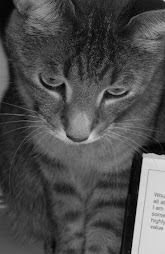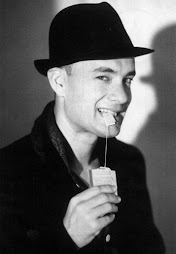
The Vampire Diaries: Dark Reunion (Book 4)
L.J. Smith

rating: 6 out of 10 "books"
*** WARNING: Contains Spoilers!!! ***
As Book 3, “The Fury,” ends with the deaths of both Katherine (who faked her own death so many centuries ago in hopes of bringing Stefan and Damon together) and Elena. When the brothers and Elena discover that Katherine has been behind all the recent awful happenings in Fell’s Church, it is Elena that manages to kill Katherine by pushing her into sunlight (while being held captive alongside with Stefan and Damon), and in the process dies herself after being exposed to too much sunlight. “The Fury” ends with the departure of Stefan and Damon.
“Dark Reunion,” the fourth and final book in the original “Vampire Diaries” series, begins six months after the horrible events occurred in book 3. This story is told from Bonnie’s point of view, which is somewhat refreshing. Just when Bonnie thinks things are returning to a somewhat normal state, she begins to have dreams involving Elena. At first she overlooks them, thinking they are just dreams. But after taking into account her ancestry (she is a descendent of the ancient Druids), Bonnie begins to wonder if these dreams are Elena somehow trying to reach her. When Caroline throws a birthday party for Meredith, the girls (including Vickie Bennett and Sue Carson), use a Ouija board to try to contact Elena. They do in fact contact her, but Elena does not have good news for them. Another evil being is out to get Fell’s Church and Bonnie must contact someone to help them. Things get interrupted however, and Sue Carson ends up dead after the electricity goes out and something comes after the girls.
The only person Bonnie can imagine being able to help Elena is Stefan. After a few more dreams, Bonnie has all the ingredients to summon Stefan; and Matt, Meredith, and she call upon Stefan and Damon from Italy. The boys arrive, and they begin investigating. The group grows suspicious of bully Tyler Smallwood, who seems to know an awful lot about the events at Caroline’s house for having not been there that night. Bonnie helps Stefan reconnect with Elena through her psychic abilities and in the process Stefan learns who the evil is behind all horrible events occurring. Stefan begins researching the history of Fell’s Church after coming up with a hypothesis as to what may be going on.
The end of the story leads up to a very dramatic climax with Stefan, Damon, Bonnie and the rest of the gang attempting to fight the evil in Fell’s Church. This was probably the most emotional part of the series for me. The end really doesn’t make any sense as to what happens, but then again, the whole series is very unrealistic with the whole vampires, psychic powers, etc. All in all, I was satisfied with the ending so that’s all that matters. It definitely still left me wanting more, which is why I am glad there is a follow up series entitled, “The Return.” I definitely think the “Vampire Diaries” series is worth reading. It’s only four books, and each can be read in a day if desired. The general storyboard is pretty repetitive (Strange things happening the gang needing to figure them out the gang figuring them out suspenseful cliff-hanger), which gets kind of annoying but isn’t super noticeable whilst reading. My advice, if you like stories involving vampires, teen drama, and suspense, then I suggest you give this series a try!



































